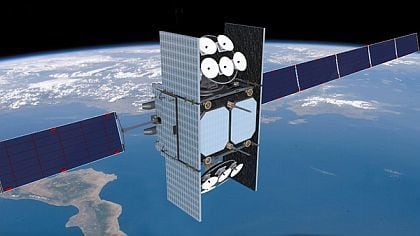A new wideband communications satellite will give the Air Force more resiliency and a stronger signal from space according to a July 10 news release from the service’s 4th Space Operations Squadron.
The 10th satellite in the Wideband Global SATCOM system was officially handed over to the Air Force during a July 10 ceremony when the 4th Space Operations Squadron accepted control. The satellite launched into orbit on a Delta IV rocket from United Launch Alliance March 15 and has been undergoing testing by Boeing, the satellite’s prime contractor, to verify that it was performing properly and had arrived in geostationary orbit.
The latest addition to the constellation will provide increased resilience and capacity and provide more bandwidth for Army users on the battlefield. According to the Air Force, the satellite will add 17 percent more signal strength to the system.
“Anytime we put a satellite vehicle in orbit, we are gaining more resiliency, which is important in an operationally contested and degraded environment,” added Lt. Col. Timothy Ryan, 4th SOPS commander. “More importantly, it gives more of the abilities and the capabilities of the satellite to the war fighter.”
For years, this vehicle was expected to be the final satellite in the WGS constellation, with the Air Force looking at alternative ways to provide wideband communications, including buying commercial services. But in 2018, Congress overrode the Air Force and fully funded an additional two satellites in the series.
On April 19, the Air Force awarded Boeing a $605 million contract modification with $300 million available immediately to produce the 11th satellite. That modification brings the total value of Boeing’s current WGS contract to $2.5 billion.
Work is expected to be completed by Nov. 20, 2023.
Nathan Strout covers space, unmanned and intelligence systems for C4ISRNET.








